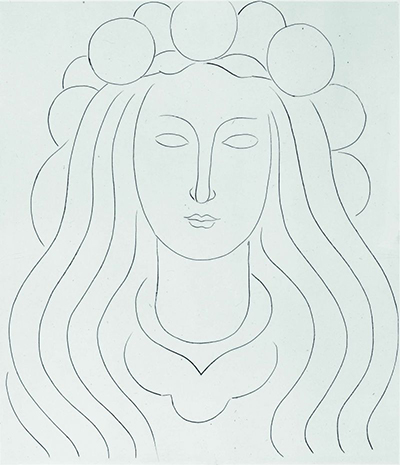There was considerable amounts of cross-over between Henri Matisse's paintings, drawings and cut-out artworks. When considering this artist's methods of production, you could argue that it makes more sense to look at it as a single entity rather than categorising into separate mediums.
Drawing was the basis for everything that he produced, without his figurative skills as a draughtsman, for example, we would never have been able to enjoy some of his most famous works such as his Blue Nude cut-out series. The endless sketches that Matisse produced helped to make some of his work looked effortlessly simple, but in truth much was down to his large amounts of previous study work. He described it as an "apparent simplicity." He openly admitted on regular occasions that he was working hard to achieve an "art of balance, of purity and serenity".
In previous centuries the drawings of famous artists were not given much exposure at all. In more recent times things have changed considerably, to the point now where there are even specialist exhibitions which focus entirely on their work with line and form. Matisse himself has been the subject of such events relatively recently. There are several reasons for this, firstly that by including a wider range of artworks, institutions find it easier to put together temporary collections of work. They also help others to get a better understanding of the creative process behind some of the more famous paintings or sculptures, too.
On initial inspection of some of the Matisse drawings featured in this section, many followers of modern art will immediately see a similarity with some of the sketches of Pablo Picasso, most specifically the way in which he produced recognisable forms from the fewest number of lines one could imagine. See, for example, the likes of Dog, War and Peace, and Woman. How could he create animals or human figures with such simplicity, often with just a single line? It seemed to be the work of genius, and probably was. Matisse managed something similar in many of his portraits, though also produced other drawings which possessed far more detail by contrast.
Matisse completed his drawings in a variety of different mediums. Some of his boldest, but simplest, work was in India ink. He used a caligraphical style that produced wide lines to create facial features in his portraits. On other occasions that would be much softer touches of the pencil, though he would choose this for more detailed pieces normally. We have aimed to provide a mixture in this section to give you an idea of the different styles that he used. The artist also experimented with the types of media that he put his designs on, though normally this would be a standard form of paper than one could actually by from a normal art store at that time.
Matisse naturally aimed for minimalism in his work, whatever the medium. In his paintings of domestic room interiors, with perhaps a landscape in the background, he would produce study sketches before commencing the painting. Each iteration would slowly remove items from the scene until all that remained was what was entirely necessary to the balance of the composition, nothing else. He would do the same with his portrait drawings, removing unnecessary lines in order to simplify down to the most basic of detail.
Just as in the 20th century when the work of draughtsmen has been treated as artistically more important than it was previously, so the great names from previous generations have been studied in greater detail. American artist, Ellsworth Kelly, for example was devoted to the drawings of Henri Matisse and would purchase several of his lithograph prints whilst living in France. These would greatily influence his own work and convince him of the value and purity of this art form. Such is the nature of the art industry, that Ellsworth Kelly's work will then go onto inspire future generations, continuing this cycle ever onwards.
Quotes about Drawing by Henri Matisse
I have always considered drawing not as an exercise of particular dexterity... but as a means deliberately simplified so as to give simplicity and spontaneity to the expression, which should speak without clumsiness, directly to the mind of the spectator.
Drawing is like making an expressive gesture with the advantage of permanence.
If I trust my drawing hand it is because in training it to serve me, I forced myself never to let it take precedence over my feelings.
You can find many more Henri Matisse quotes in our specialist section.




